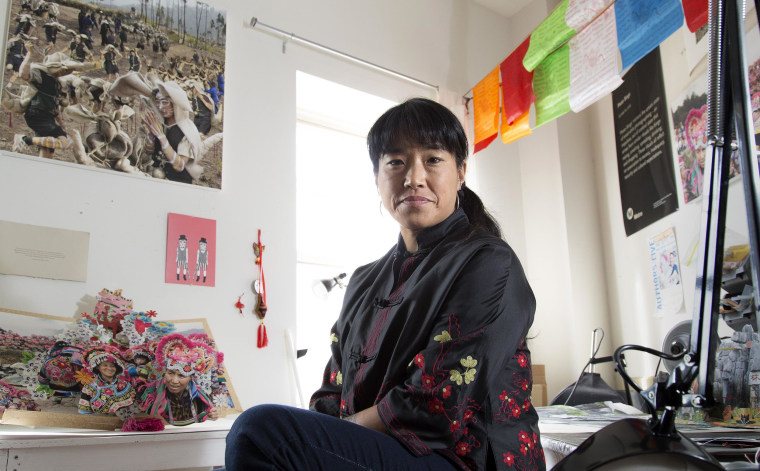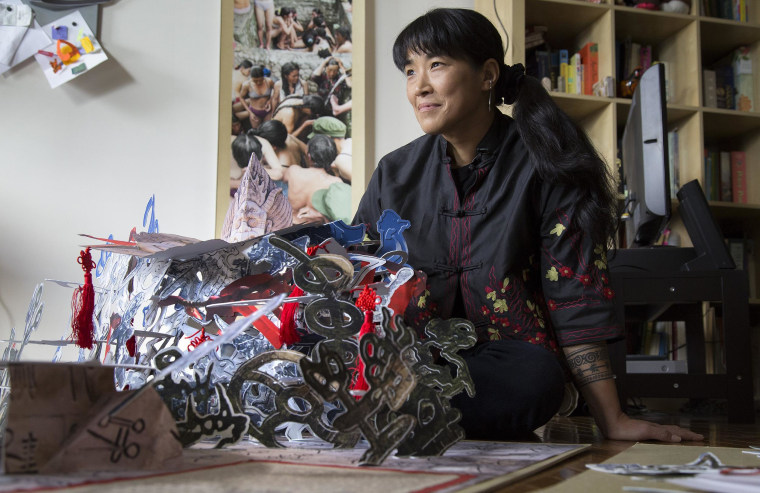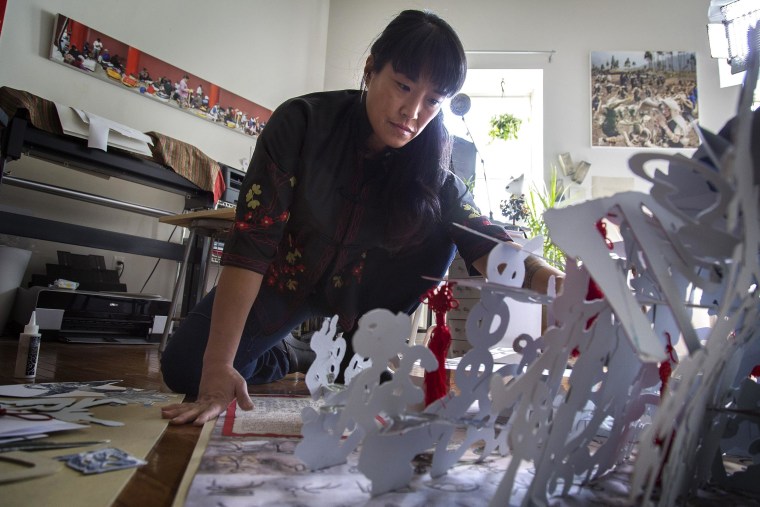The first time Colette Fu visited China, people recognized her at once.
In the 1994, when she was traveling on a tour that stopped at a college in Kunming, in southwest China, the dean rushed out to greet her, shaking both of her hands. “I didn’t understand why he was so honored to meet me,” Fu said. “I found out my great-grandfather had been governor of the province and a general, and he’d helped found the school.”
The dean invited Fu, a recent college graduate, to teach English – launching her two-decade exploration and documentation of China’s ethnic minorities, culminating in handmade pop-up books featuring dazzling photos that spring up on ingenious mechanisms.
Growing up in New Jersey and later in Virginia, where she was the only Chinese person in her school, she didn’t feel like she fit in – not until that fateful trip to China where at every turn, strangers became family.
She stayed for three years in Yunnan province, where nearly half of the country’s 55 official recognized minority tribes reside. The first year, she hung out with expatriates. The next, she began taking pictures of her friends, and by the third year, she’d gained the confidence to travel by herself, taking pictures of strangers. In 1996, she searched for the torch festival in Sichuan province, said to be an annual tradition of her mother’s tribe, the black Yi. But she couldn’t find it. She asked for help from a travel agent who found a relative of Fu’s – a dance teacher who invited her to stay with her.
In turn, that auntie introduced Fu to a policeman, a distant cousin who took her on a 10-day journey by tractor, bus, and horse to her mother’s ancestral village of Jinyang. When Fu struggled, the cousin told her, “If you don’t get up, I’ll carry you on my back.”

The following year, when Fu returned with her mother, her cousin took her back to the village, but this time they drove.
“Did they just build the road?” Fu asked, perplexed.
“It’s always been there,” her cousin replied. He’d just wanted to take her on the trek.
Back in the States, she earned a Master of Fine Arts in photography at the Rochester Institute of Technology, and learned how how to make pop-up books by deconstructing them. She returned to China in 2008 on a Fulbright grant, on a project entitled “We are Tiger Dragon People,” focusing on the minority tribes in Yunnan.
“My goal is to introduce these groups, some aspect of their culture that’s unique,” said Fu, 45, who lives in Philadelphia’s Chinatown.

Zvezdana Stojmirovic, a professor of graphic design at the Maryland Institute College of Art, praised Fu’s work in What Weekly. “Flurries of bright accents—magentas, cyans, and reds— are dispersed around neutral backgrounds creating a seductive cacophony of color. I find myself taken slightly aback by details that challenge my assumptions of beauty: creased skin, missing teeth and heads wrapped in sacks.”
The lighting for the photos in each pop-up have to match, preferably without strong shadows and with similar lighting. Fu waits awhile after shooting the photos, to a gain a fresh view in order to create a story.
"I find myself taken slightly aback by details that challenge my assumptions of beauty: creased skin, missing teeth and heads wrapped in sacks.”
First she makes a digital collage on her computer, figuring out placement and color, and then works on the pop-up mechanisms that cause her composition to explode from the page.
She mounts the photos and cuts by hand; plotting and cutting by laser is too imprecise. Over time, she’s developed tendonitis. Sometimes, when she bears down on the X-acto knife, she hears a click in her elbow, and once her elbow popped out. “Now I can’t do pushups!" she laments.

As an Asian American, Fu is a rarity in the world of working artists. A recent survey found that just 7 percent of art school graduates are of Asian descent, and 3.9 percent are working artists. The vast majority are white.
Her parents immigrated to the United States to attend college, and her father’s priorities were to support the family. To make art, Fu spends hours each week looking for grants and residencies that give her the freedom work on what she wants.
“It takes juggling a lot of different tasks to survive as a working artist,” Fu said. “An old boss in the publishing industry once told me he thought it was 35 percent making art and 65 percent marketing.”
She also teaches, works on public art projects, volunteers in the community – including running workshops in a homeless shelter – and freelances for clients including Vogue China, Canon Asia, Moët Hennessy, and Louis Vuitton, on projects that include the largest pop-up book in China, displayed at a luxury mall.
Fu returned to China earlier this year, with awards from the Leeway Foundation and the Swatch Art Peach Hotel artist residency in Shanghai, to expand her project, visiting Inner Mongolia, Xinjiang, Guizhou, Guangxi, and Hunan.
“I didn’t think when I started the project I was taking pictures of things that were evolving so quickly,” Fu said. But at a festival, she noticed everyone was wearing machine-made versions of textiles, some paired with modern-day platform shoes, mini-skirts, and make-up. “I panicked, thinking I had to change my project. Then I realized I just had to travel deeper. You can still go to the village, where people still look like they did twenty years ago.”